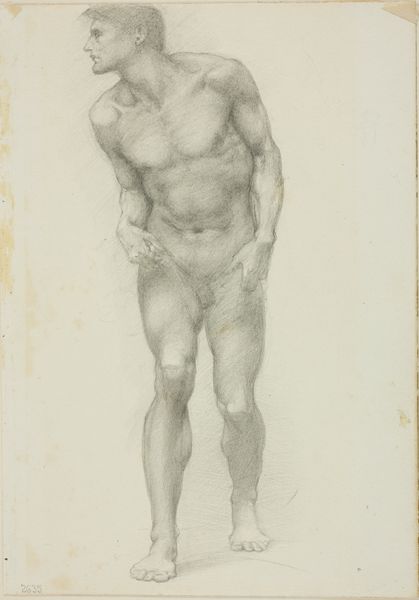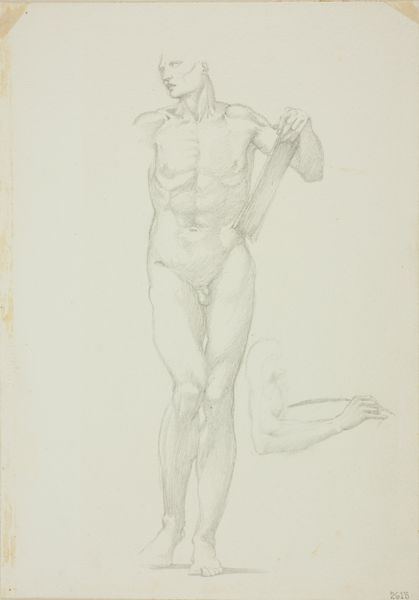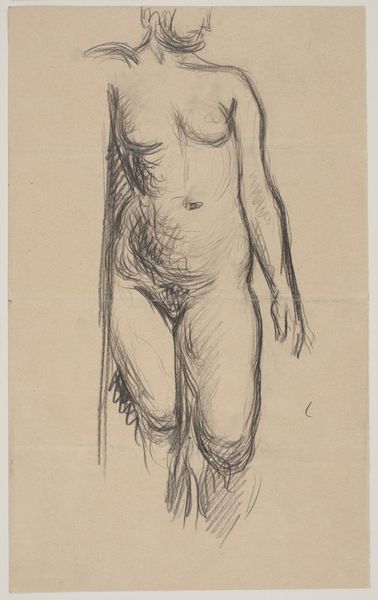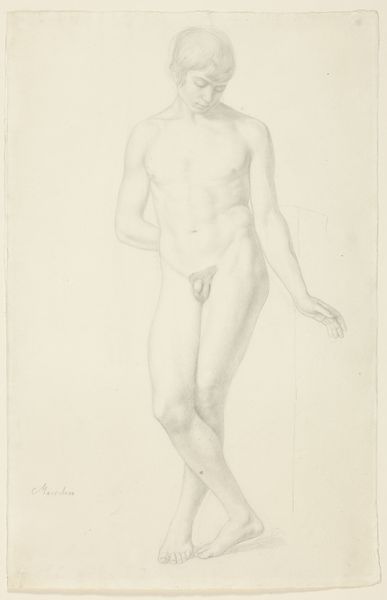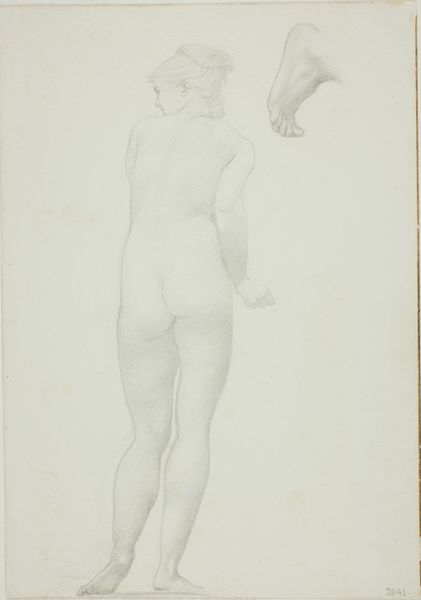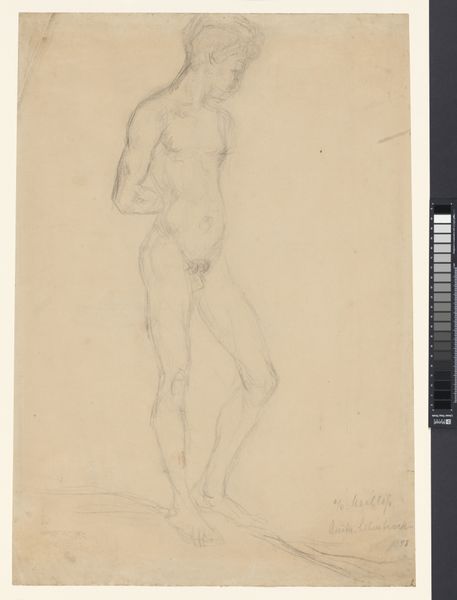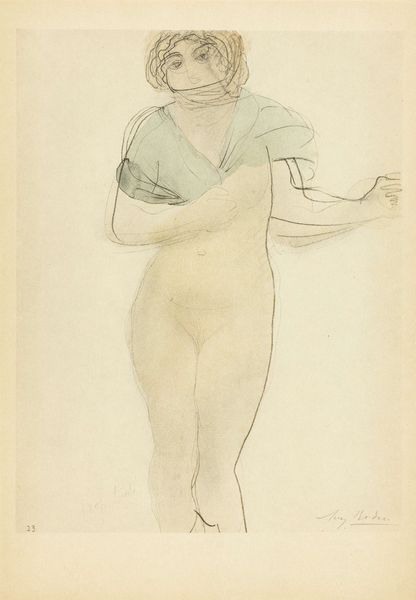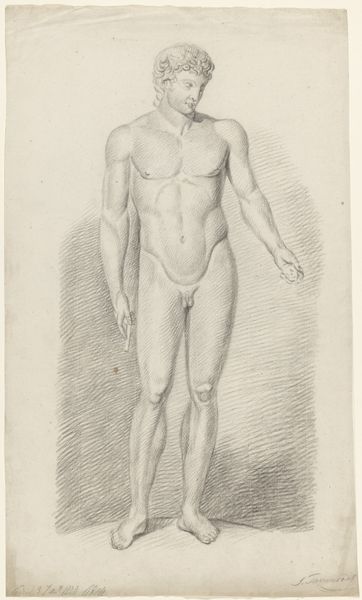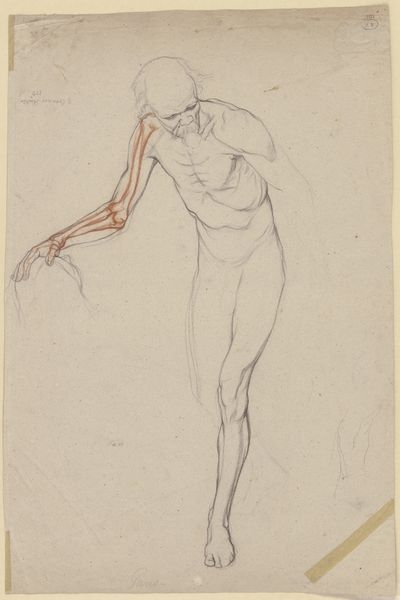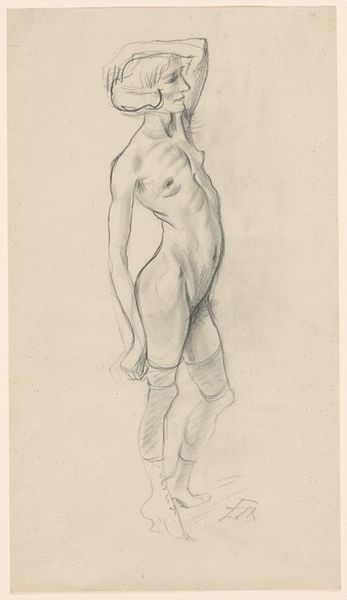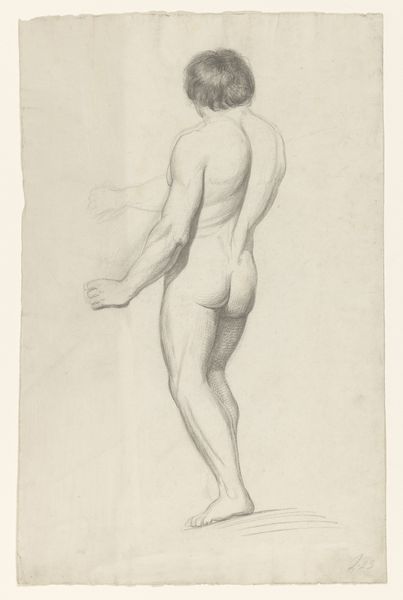
drawing, pencil
#
drawing
#
pencil drawing
#
pencil
#
academic-art
#
nude
#
realism
Dimensions: 14 3/8 x 6 5/8 in. (36.5 x 16.9 cm) (image)23 3/4 × 19 3/4 in. (60.33 × 50.17 cm) (outer frame)
Copyright: Public Domain
Jean Auguste Dominique Ingres made this pencil drawing, Standing Female Nude, location unknown. The composition is dominated by the figure of a woman, rendered in delicate pencil strokes against a pale background. Note the subtle gradations of tone which give volume to her form. Ingres was deeply engaged with classical ideals, yet this drawing challenges those very notions. The figure's proportions, while elegant, have a certain elongation, a deliberate distortion of classical norms. Her pose and the unfinished quality of the drawing further disrupt any sense of idealized perfection. The vertical lines visible in the center of the drawing, and the presence of the hand to the right, create visual and conceptual tensions. These graphic elements remind us of the constructed nature of the image. The subtle interplay between classical form and its deconstruction invites ongoing interpretation and reflection.
Comments
minneapolisinstituteofart almost 2 years ago
⋮
Jean-Auguste-Dominique Ingres was a perfectionist, obsessively reworking paintings, sometimes for decades, and making thousands of drawings. He drew this study from a live model when he was in his mid-sixties. Ingres routinely made life studies of all the figures in his compositions, posing models and drawing them in the nude to ensure anatomical accuracy, even when the final versions would be clothed. The curvaceous, coolly sensuous figure in this study would become a virtuous female saint heavily cloaked in a medieval costume in a stained-glass window in the royal burial chapel at Dreux, France. During research for this exhibition, it was discovered that this work was stolen by the Nazis in France in 1941 from the Jewish collector David David-Weill. The theft was meticulously documented by the Germans when the work was processed at the Jeu de Paume museum in Paris, before being sent to the Altaussee salt mines in Austria. The drawing was restituted after the war, on March 27, 1946, and David-Weill’s heirs sold it to a dealer in 1971.
Join the conversation
Join millions of artists and users on Artera today and experience the ultimate creative platform.
